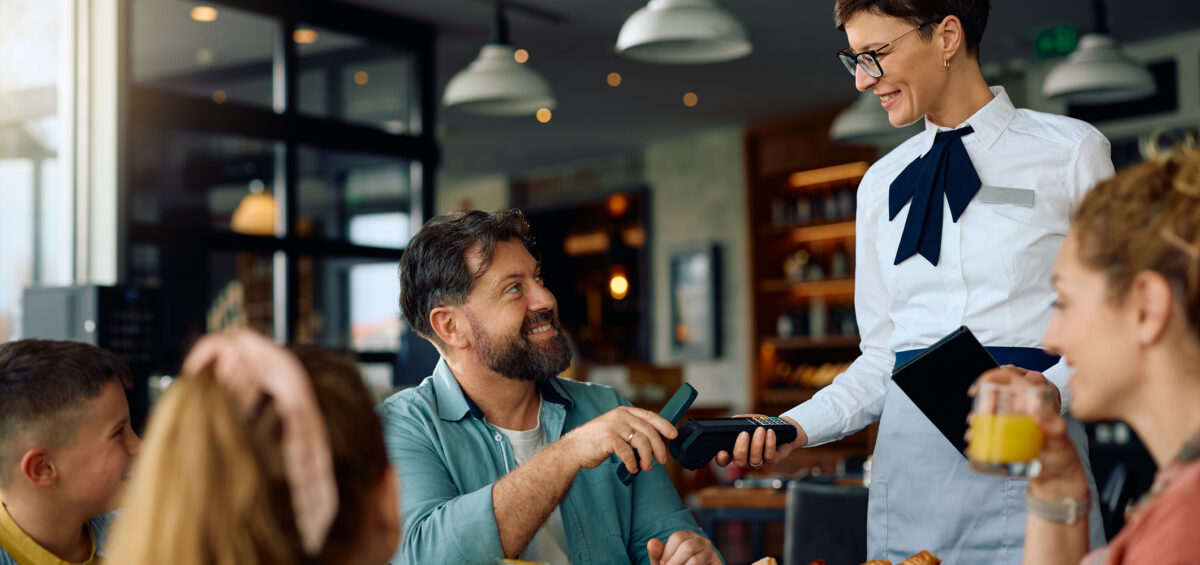The good old punch card had its day. Remember “Buy 10, Get 1 Free”? For decades, that tiny slip of paper stood as the gold standard for restaurant loyalty programs, but today’s diners and data-driven operators are leaving it in the dust.
From mobile apps to POS-integrated tracking and targeted offers, the new era of loyalty is about connection, convenience, and customization. If you’re still handing out punch cards, it’s time to rethink your strategy.
Why “Buy 10, Get 1 Free” Doesn’t Cut It Anymore
Today’s Guests Want More Than Just a Freebie
Modern consumers are flooded with options and loyalty isn’t earned as easily as it used to be. While the classic punch card relies on a single static reward, today’s guests expect:
- Personalized rewards
- Mobile accessibility
- Progress tracking
- Exclusive offers
In short, they want to feel like your brand knows them, not just that they’re “9 burgers away from a free one.”
Paper Doesn’t Play Well in a Digital World
Punch cards can be forgotten, lost, or counterfeited. Worse, they offer zero insight into guest habits. There’s no way to know:
- How often a guest visits
- What menu items they buy
- Whether they responded to an offer
That’s a missed opportunity to drive deeper engagement and boost revenue.
Leveraging POS Integrations for Smarter Loyalty
Your Data Goldmine Is Already in the System
If you’re using a POS system like Toast, Par PixelPoint, Focus, or Qu, you’re sitting on a treasure trove of customer insights. POS-integrated loyalty platforms allow you to:
- Track visits, spending, and order history
- Automatically assign and redeem rewards
- Tie loyalty performance to actual sales
No manual entry. No guesswork. Just clean, actionable data tied directly to your operations.
Loyalty That Feeds Your Entire Operation
When loyalty programs live inside your POS, they do more than reward guests, they:
- Inform staffing decisions (know when loyalists typically visit)
- Help forecast inventory (based on repeat orders)
- Highlight your most profitable customers
It’s loyalty that works for you, not just your guests.
Connecting Guest Behavior to Operational Decisions
Beyond Marketing: Loyalty as a Management Tool
Many restaurant operators view loyalty as just a marketing function, but when it’s integrated with your operations platform, it becomes a business intelligence asset.
Here’s how:
- Inventory Planning: Knowing what loyal customers consistently order can help forecast demand.
- Labor Efficiency: Predictable guest habits can drive smarter shift scheduling.
- Menu Innovation: Frequent order data can reveal trends or test LTO success.
With QSROnline and your POS data working together, you can make smarter day-to-day decisions based on real guest behavior.
Using Customer Data to Forecast Traffic and Prep Better
Loyalty-Driven Forecasting in Action
When you know how your loyal guests behave, you can forecast demand more accurately. For example:
- A burger spot sees spikes on Wednesdays from loyalty members using a midweek reward.
- A pizza chain notices high redemption rates the first weekend of every month.
- A breakfast concept learns their loyalty users prefer takeout over dine-in.
All of these insights allow you to staff smarter, prep better, and reduce waste.
Smarter Prep = Less Waste, More Margin
Prep based on assumptions, and you risk spoilage.
Prep based on loyalty behavior and usage data, and you maximize efficiency:
- Know which ingredients will move fastest
- Prep according to redemptions and trend patterns
- Reduce over-ordering and under-utilization
This is how QSROnline users stay one step ahead, turning loyalty from a marketing tool into a profit strategy.
Loyalty Is Not a Gimmick, It’s a Growth Strategy
Today’s most successful restaurants don’t just reward loyalty, they build it into the very core of their operations. By ditching outdated punch cards and embracing integrated, data-driven platforms, you create:
- Better guest experiences
- Stronger operational decisions
- Higher lifetime value per customer
Tools like QSROnline will connect the dots between your POS, your team, and your data. You’re not just tracking visits, you’re building relationships that fuel revenue.











